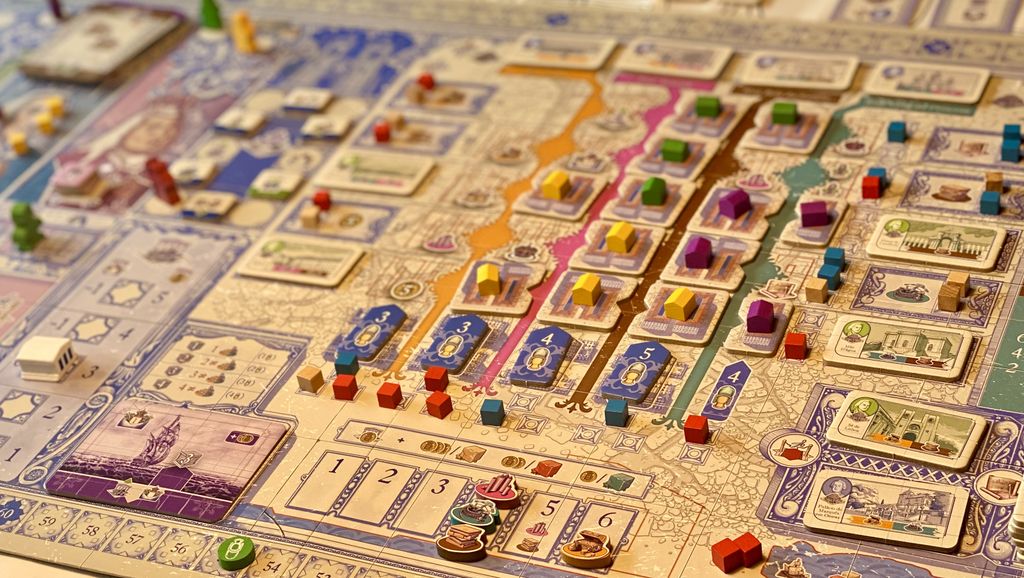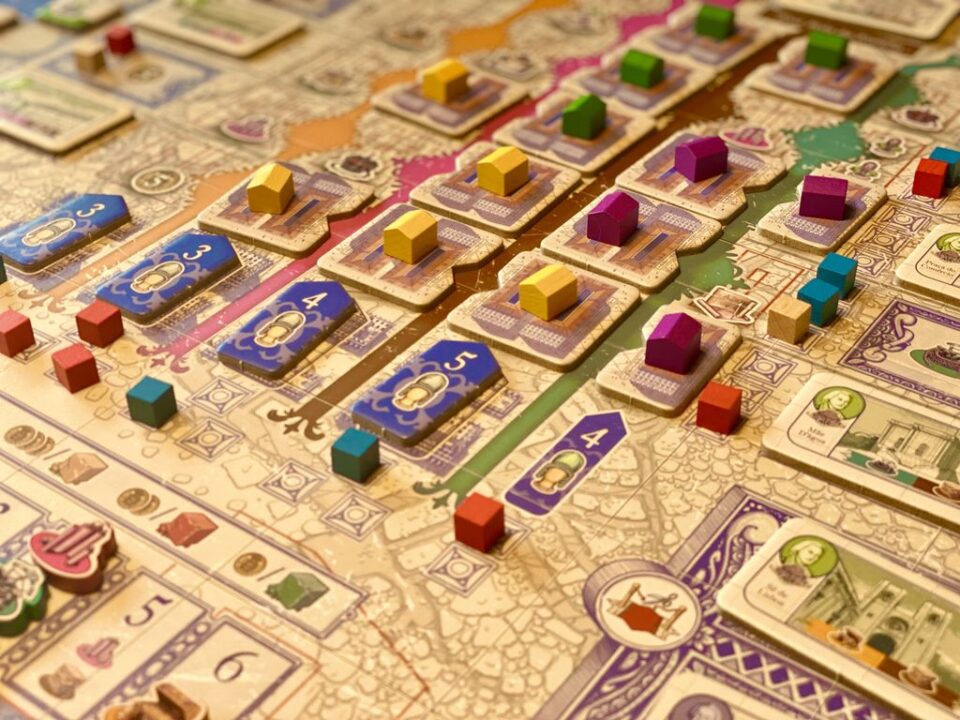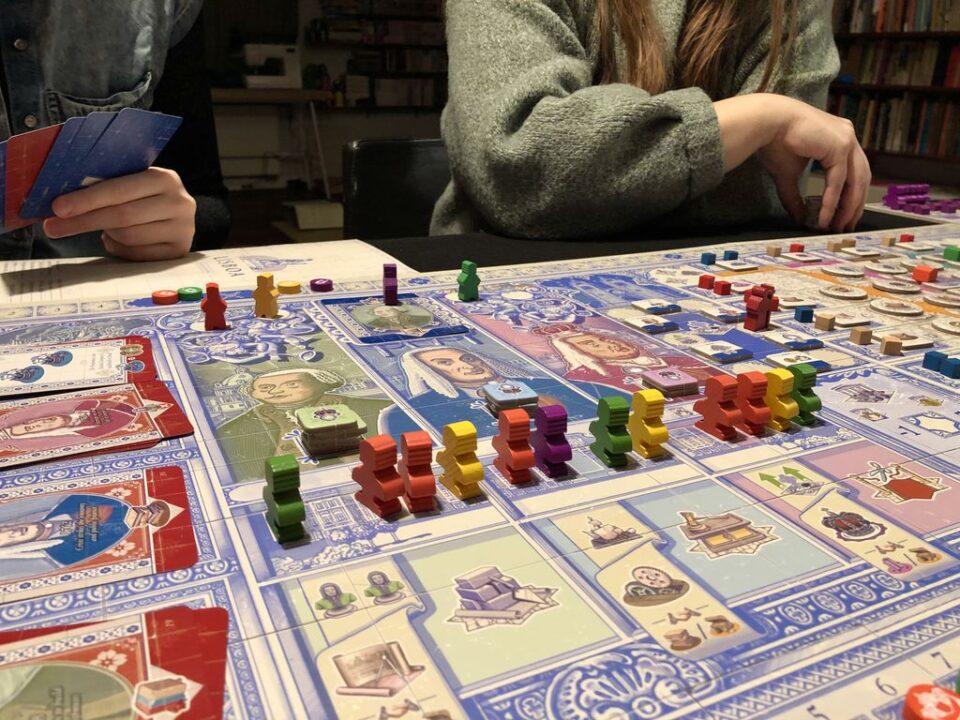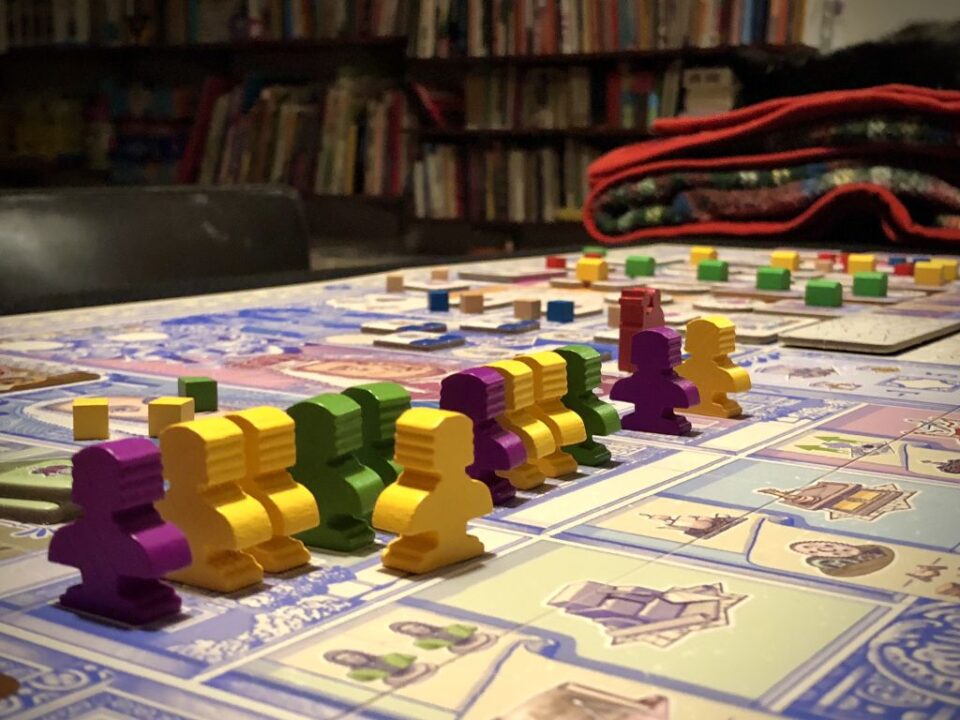Overview
Welcome to the review of Lisboa, an immersive and strategic board game set in the vibrant city of 18th-century Lisbon. In this review, we will explore the gameplay mechanics, artwork and components, strategy and replayability, and the captivating theme and narrative that make Lisboa a standout title in the world of tabletop gaming.
How It Plays
Setting Up
To set up a game of Lisboa, players must first lay out the game board, which represents the city of Lisbon. They will then distribute the different types of cards, tiles, and tokens to each player, ensuring that the necessary resources and building materials are readily available. Each player will also select their character, which grants them special abilities throughout the game.
Gameplay
The gameplay of Lisboa revolves around a combination of card play, tile placement, and resource management. Each player will take turns performing actions by playing cards from their hand. These actions can include gaining resources, constructing new buildings, influencing the political landscape, and generating income.
In addition to individual actions, players can also take advantage of the rules of the Royal Court, influencing the city’s policies and regulations for their benefit. As the game progresses, the actions and choices of each player will affect the overall state of the city, making strategic planning and adaptability vital for success.
Winning the Game
The game of Lisboa is played over a series of rounds. At the end of the game, players tally up their victory points, which are earned through various achievements, such as constructing unique buildings, gaining political influence, and fulfilling public demand contracts. The player with the highest number of victory points is declared the winner, symbolizing their success in overseeing the rebuilding of Lisbon and solidifying their power and influence in the city.
Lisboa offers a challenging and immersive gameplay experience, combining strategic decision-making, resource management, and careful planning. Each playthrough presents unique opportunities and challenges, ensuring that no two games are alike.
Want to know more? Read our extensive strategy guide for Lisboa.
Gameplay mechanics are the heart and soul of any board game, and Lisboa does not disappoint. From the moment you open the box, you are greeted with a stunning array of cards, tiles, and tokens that immediately immerse you in the vibrant world of 18th-century Lisbon. The game transports you to the bustling streets and grand architecture of the city, immersing you in its rich history and allowing you to experience the challenges and triumphs of rebuilding after the devastating earthquake and subsequent fires.
Engaging and Strategic Decision-Making
Lisboa offers players a deep and engaging gameplay experience, filled with strategic decision-making at every turn. The game revolves around a unique “Cardplay” mechanic, where players must carefully manage their hand of cards, making tough choices between using cards for their immediate benefits or strategically placing them on the board for long-term advantages.
Transitioning between card management and tile placement, players must navigate the intricacies of the game’s mechanisms to maximize their chances of success. The careful balance between resource management, economic development, and political influence keeps players constantly engaged and on their toes, making every decision feel impactful and meaningful.
Tile Placement and Actions
In Lisboa, players have the opportunity to shape the city by strategically placing tiles that represent different buildings and regions. Each tile serves a unique purpose, such as generating resources, providing special abilities, or triggering events that can either benefit or hinder players’ progress.
This adds an extra layer of complexity to the gameplay, as players must carefully consider the placement of their tiles to build an efficient engine that generates the resources and influence necessary to thrive. The wide variety of available actions and interactions between the different tiles ensures that no two playthroughs are the same, guaranteeing replayability and excitement with each new game session.
Challenging Player Interaction
Within the world of Lisboa, player interaction is not only about trading or competing for resources, but also strategically influencing political and economic developments to gain an advantage. Throughout the game, players can leverage their political connections to implement new laws and regulations, affecting the game state and potentially derailing their opponents’ plans.
This dynamic adds an extra layer of challenge and intrigue to the gameplay, requiring players to stay vigilant and adapt their strategies based on the ever-changing landscape of Lisbon. Each game evolves differently depending on the choices made by players, fostering a sense of competition and unpredictability that keeps the gameplay fresh and exciting.
With its engaging gameplay, rich thematic integration, and challenging decision-making, Lisboa is a standout board game that will captivate both casual players and seasoned board game enthusiasts alike.
Next up: Artwork and Components
But before we dive into the stunning artwork and meticulously crafted components that enhance the gaming experience, let’s take a moment to appreciate the beautifully interconnected mechanics that make Lisboa a must-play for any tabletop gaming connoisseur.

Immersive Artwork and High-Quality Components
When it comes to artwork and components, Lisboa sets the bar high. The game features breathtakingly beautiful illustrations that capture the essence of 18th-century Lisbon. From the colorful, intricately designed cards depicting historical figures and landmarks to the exquisite detail of the tiles and tokens, every element of Lisboa’s visual presentation is a feast for the eyes.
Artistic Attention to Detail
The attention to detail in the artwork is impressive, with every card and tile telling a story of its own. The vibrant colors and intricate illustrations transport players back in time, making them feel as if they are truly part of the rebuilding effort in Lisbon. The careful attention to historical accuracy in the artwork adds an extra layer of immersion, allowing players to fully immerse themselves in the rich tapestry of 18th-century Lisbon.
High-Quality Components for a Premium Experience
Not only does Lisboa boast stunning artwork, but it also utilizes high-quality components that enhance the overall gaming experience. The tiles and tokens are made from thick, durable material that feels satisfyingly weighty in your hands. The cards are printed on sturdy cardstock, ensuring they will withstand repeated shuffling and handling without wearing out. The components are not just visually appealing, but also built to last, bringing a premium touch to the tabletop.
From the engaging gameplay to the stunning artwork and meticulously crafted components, Lisboa offers a complete and immersive package for board game enthusiasts.
Next up: Strategy and Replayability
But before we explore the strategic depths and replayability of Lisboa, let’s take a moment to appreciate the stunning aesthetics and high-quality components that elevate the gaming experience to new heights.

Deep Strategy and Endless Possibilities
Strategy and replayability are paramount in any board game, and Lisboa delivers on both fronts with its intricate gameplay and limitless possibilities. The game presents players with a myriad of strategic choices, each potentially leading to different outcomes and paths to victory. From resource management to carefully timing actions, every decision matters, making Lisboa a favorite among strategy enthusiasts.
Strategic Depth and Multiple Paths to Victory
Lisboa offers a wealth of strategic options, allowing players to pursue different paths to achieve victory. Whether you focus on developing your trade network, influencing the political landscape, or constructing grand buildings, each approach requires a unique strategy and careful planning.
The game’s depth lies in its multi-layered decision-making, as players navigate the complex web of interrelated mechanics. Balancing short-term gains with long-term objectives becomes a fascinating challenge, and mastering the art of efficient resource allocation and effective action sequencing can greatly influence your chances of success.
Replayability and Dynamic Gameplay
One of the hallmarks of a great board game is its ability to provide a fresh and engaging experience with each playthrough, and Lisboa excels in this aspect. With its ever-changing board state, diverse strategies, and random character abilities, the game offers a high level of replayability.
No two games of Lisboa will ever be the same, as players must adapt to the evolving city, respond to the actions of other players, and explore new tactical opportunities. Each session feels dynamic and exciting, promising new challenges and strategic considerations, ensuring that Lisboa maintains its appeal and stays on your gaming table for years to come.
Next up: Theme and Narrative
But before we delve into the captivating theme and immersive narrative, let’s admire the deep strategic depth and endless replayability that make Lisboa a remarkable entry in any board game collection.

The theme and narrative of Lisboa are beautifully woven into every aspect of the game, creating a rich and immersive experience for players. From the historical context to the detailed artwork, Lisboa captures the essence of 18th-century Lisbon and brings it to life on the tabletop.
An Authentic Historical Setting
Lisboa’s theme is deeply rooted in history, allowing players to step into the shoes of influential figures involved in the reconstruction of the city after the devastating earthquake. The game seamlessly integrates historical events, characters, and locations, creating a compelling narrative backdrop that enhances the gameplay and adds depth to the overall experience.
Engaging Storytelling through Gameplay
The gameplay mechanics of Lisboa are tightly intertwined with the narrative, enabling players to make strategic decisions that carry weight and impact within the context of the story. As you navigate the intricacies of rebuilding Lisbon, you’ll encounter challenges and opportunities that often mirror the real struggles faced by the city’s inhabitants during that time.
Immersive Artwork and Components Enhancing the Theme
The stunning artwork and high-quality components of Lisboa further immerse players in the historical theme. The beautifully illustrated cards, tiles, and tokens are not only visually pleasing but also help to reinforce the narrative and create a sense of authenticity and immersion. Every aspect of the game’s visual presentation serves to transport players to the vibrant and bustling streets of 18th-century Lisbon.
The combination of a compelling historical theme, engaging storytelling, and immersive visual design makes Lisboa an exceptional board game experience that will enchant both history buffs and casual players alike. The attention to detail in the theme and the seamless integration of narrative and gameplay showcase the level of care and craftsmanship that went into its creation.
I highly recommend Lisboa to any board game enthusiast looking for a deep and engaging experience that combines strategic decision-making, stunning artwork, and immersive storytelling. Prepare to be transported to a bygone era and embark on a captivating journey of rebuilding and discovery.

Conclusion
In conclusion, Lisboa is a remarkable board game that combines immersive gameplay mechanics, stunning artwork and components, strategic depth, and a captivating theme and narrative. From the moment you set up the game and embark on rebuilding 18th-century Lisbon, you are immersed in an engaging and challenging experience that keeps you on your toes and constantly engaged. With its rich historical theme, meticulously crafted components, and strategic decision-making, Lisboa is a must-have for any board game enthusiast seeking a truly immersive and rewarding gaming experience.
Thank you for reading this review of Lisboa. Happy gaming!


